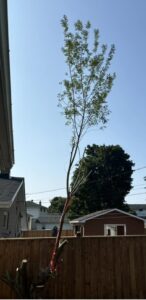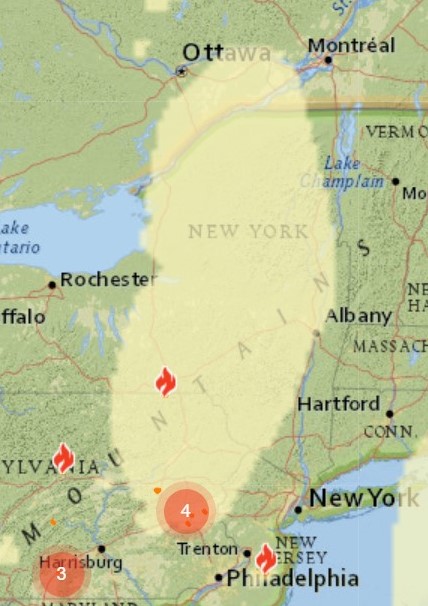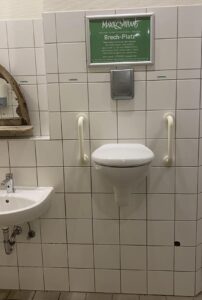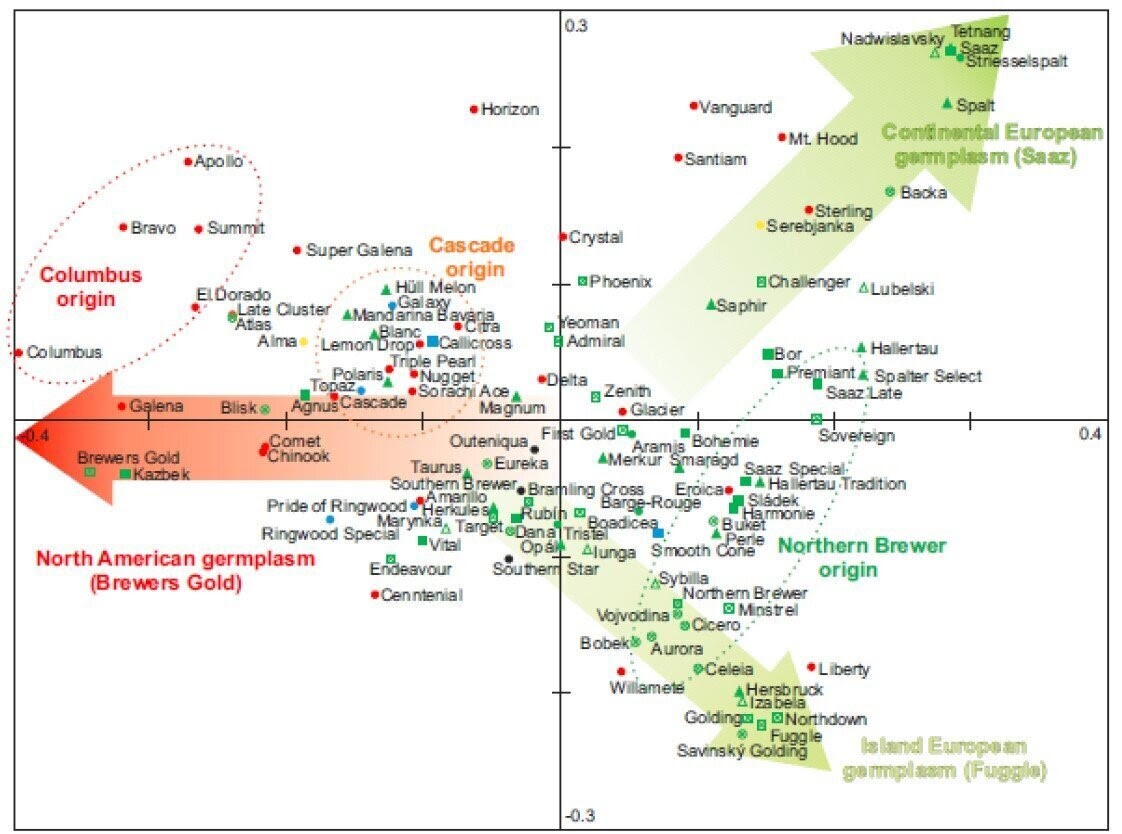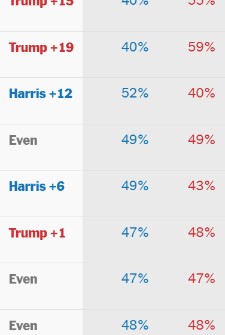 Today is the second scariest day in the next week or so. Number two. Today, the undead walk the earth! But by next Wednesday, Americans may have elected the Nazis. I sure hope some of that polling data is wrong. Anyway, there is a time and place for everything and this day and this week’s focus is all about the lesser of those two evils – the celebration of Lords Satan’s reach into your verrrry soul and the tenuous grasp of all existence, of all of reality itself. Let next week take care of next week.
Today is the second scariest day in the next week or so. Number two. Today, the undead walk the earth! But by next Wednesday, Americans may have elected the Nazis. I sure hope some of that polling data is wrong. Anyway, there is a time and place for everything and this day and this week’s focus is all about the lesser of those two evils – the celebration of Lords Satan’s reach into your verrrry soul and the tenuous grasp of all existence, of all of reality itself. Let next week take care of next week.
Still, good to see one of the candidates has some normal habits, some of which like drinkin’ and swearin’ were on display over beers at a stop with the Governor of Michigan at a bar on the campaign trail:
‘We need to move ground among men,’ she can be heard saying in a low voice to Whitmer, clearly not thinking that anyone was privy to their conversation. She then looked up abruptly and cut off the private chat. ‘Oh, we have microphones and listening to everything,’ a surprised Harris says. ‘I didn’t realize that.’ ‘Okay… you’ll bleep my F words hopefully,’ Whitmer joked. ‘We just told all the family secrets, s***,’ Harris replies before her busting out into a loud laugh.
Giving equal time, did you hear about the Respublican running for office in Wisconsin? Traveling GOP U.S. Senate candidate Eric Hovde (AKA the “California banker”) wants to ban beer sales and it has been picked up in his opponent’s political ads. Rolling Stone covered the story a few months ago:
…if we just decriminalize [marijuana]? Fine. Nobody’s going to go to jail. No one’s going to get arrested for it. That’s your self-determination, but you’re not going to turn it into an enterprise. Frankly, it should have happened with alcohol,” Hovde says in the audio. “I mean look at — alcohol has a lot of negative byproducts. If somebody wanted to distill it, drink it. Fine, go ahead…
He also apparently bought a tavern to tear it down. Booo…. Now… getting serious, Jessica Mason has reported on concerns that the language related to the pricing of beer is posing challenges:
One of the issues this kind of research presents is that if the nation is constantly sold beer on “lowest prices” translating as “best” then it will not consider beers as different or with some deserving of higher price points than others. Describing how crucial pricing is, Sussex-based Burning Sky founder and head brewer Mark Tranter told db: “All overheads continue to rise but it’s impossible to put our prices up in line with these, without running the risk of pricing ourselves out of the market and or alienating people.”
That sounds a bit like being clear about value is a bit of a problem – unless there was a way to factually explain the value to be found in an more expensive drink. Well explained value is always good. Consider how Tennent’s is holding its own in its home market due to its accepted inherent value:
Changes in UK alcohol duties have led to some lager brands, including Carlsberg and Grolsch, being reformulated to a lower 3.4 per cent ABV, but Findlay said that would not be happening with the core Tennent’s product, which has an ABV of 4 per cent and accounts for more than half of the lager segment in Scotland. “Tennent’s is such a strong brand that to reformulate it or reduce the ABV would be a no,” he stressed. “We have lower ABV variants of Tennent’s available, so there are no plans and no need to change what is an astonishingly successful brand.”
Hmm… somewhat relatedly Matty C. shared on the absense of critical writing in beer, something that that is has been one of my interests for, well, decades now given it is only through critical thought that value is established:
This week I’ve been thinking about the lack of criticism in beer writing. It’s something I’ve thought about a lot over the years, because beer and pub reviewing doesn’t really exist in any meaningful way compared to how it does in wine or food writing. I consider that there are many reasons why this is the case, the main one being a general lack of consideration from mainstream (or, indeed, niche) media outlets for beer and pubs. But also it’s because beer drinkers are a different beast to most wine drinkers. There’s a certain level of—dare I say—zealotism, that means if anyone decides to log on and pan a beer, they can almost certainly expect some flack.
This is great. He has pushed this out into a great open conversation and I have to say that it has caused me a lot of thinking – something I like to avoid most weeks. I’ve actually written this week’s notes twice to cope with my inner termoil. Why? In part, that word – zealotism. Zeal seems to sit one step down the stairs from enthusiasm and you know what we think of the enthused. Why? Because zeal places countervaling pressure on value. It distracts one from reality. So how to respond?
First, I will try to be brief but I see three distinct factors as the prime drivers of this gaping chasm between reality and zeal in beer writing: (i) objectivity denial; (i) unreliable claims to expertise; and (iii) real marketplace consequences. Starting with objectivity denial, have a look at this passage in one of Boak and Bailey’s recent (and always fabulous) Patreon footnotes to their Saturday roundups:
…the two Grodziskies we drank this week were more interesting than enjoyable. Both were also adulterated with things like fruit and tea, making it hard to get a sense of the base flavour… We’ve tended to avoid the phrase ‘beer-flavoured beer’ and similar for the reasons Jeff sets out: the idea of what ‘beer flavoured’ is totally subjective.
It appears they and I are struggling with similar thoughts* as after I started sketching this out on Monday, I realized they themselves had posted their own cogitations on this whole thing – though I cannot agree with their interim assessment that it is just a pint and “we do not need that intel” – especially given the annual investment a beer fan may make. It’s not about the pint but all the pints one buys. In a year. In a life. As a result, I believe it is not correct to say that good beer can be, should be lost in an ocean of subjectivity. One cannot determine value if everything is subjective. No, there are and should be measuring sticks which can be relied upon. There must be the intel.
That being said, who would set these standards. Who measures the sticks? Beer experts? Problem: there are no beer experts in that blanket general sense. Sure, there are real experts in specific areas of beer and brewing with the greater expertise existing in narrower areas. Like any study. And a number people certainly know much more than many others. No question. But claims of expertise in that general sense that we see eminating from some of the merely eager is a common problem with beer writing. Can we place our trust with zealots? One shouldn’t. The resulting status scrambling** to be identified as that authoritative person may be vigourous, vicious and even entertaining but all in all it’s hardly an academic process. And it creates a fog around the question of value.
Perhaps the saddest reality is that the rejection of standards and the weakening claims of expertise have left an imbalance of power. Perhaps ironically, beer writers lack sufficient security to stand up against pressures from the trade. In the very comments under MC’s post, Gary raised this very point:
The difficulty is few want to risk offending people in the industry, as future access to the brewery may be limited and awkwardness can arise when you meet them at events.
And in addition to event attendence, in order to get ahead some beer writers are also expected to show up time after time as supportive boosters – as compliant judges or even consultants. We even sometimes see the trade described as a “we”*** – which can leave one left with the impression that one gets the inside view of the trade by being effectively a branch of the trade. None of which is wrong if, well, you don’t want to be warned off the bad beer, don’t want to learn about relative value but are only looking for something to read as light entertainment. Which it often all that you get. Which is fine. Consequence free and affirming pleasure writing for a happy sometimes tipsy crowd. All fine.
But we have to be honest – that is the opposite of a critical discourse. It can deter journalistic inquiry and even triggers stronger response: “…you can’t write that, those are real people with real jobs!” or “you shouldn’t be writing about beer” or that stumblefuck of a non-thought “you are just a old curmugeon!” It even justifies the recently received assessment I’ve heard from one writer about being told in a formal setting that DEI isn’t a business imperative for breweries, just part of culture wars. And of course this is all in addition to that old chestnut of total alcohol harm denialism from the anti-science set.**** As a direct result of those factors, not only has the opportunity to argue in favour of value been lost, I would also argue that it is one key reason there is no reliable concept of “fine beer” – like we have in wine or spirits. A critical discourse is fundamental to anything deemed fine. But this trade? Won’t have it. Would you want it? I do.
Thankfully, there is a actual critical discourse out there even if the jockeying beer writers of a certain scrabbling sort don’t engage with it. Think of The Beer Nut reviewing can after can, glass after glass excellently so you don’t have to… unless you want to. He has no problem being honest about value:
My recent complaint that the Teeling Distillery giftshop was overcharging for the small cans of DOT collaboration beers at €5.50 has been heeded. The latest addition to the series was €6: For Wheats Sake!
Think also of Retired Martin, Ron and others travelling to pub after pub taking photos and making observations with his exceptionally keen eye so you don’t have to. This week Boak and Bailey wrote in generous terms on the wonders of this sort of blogging… over, you know, on their Substack:
One thing blogging is better at than social media is linking. Old skool blogging thrived on the practice of generous linking. Sometimes, it was about search engine optimisation (SEO) – which is no bad thing when it helps good stuff rise to the top of search results. But mostly it gave readers a chain to follow. We used to spend ages following links from one blog post to another when we were first learning about beer. A sort of Choose Your Own Adventure approach to study. Blogs are also more stable and more independent. They’re less likely to suffer from an egotistical investor buying up, damaging, or shutting down a platform. With a blog, you have your own space to do your own thing.
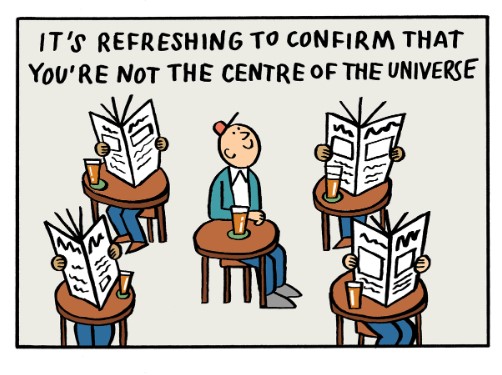 Viva blogs! Viva Viva!!! And there are a few dogged shapers of public opinion working their way into the general media who rise above as well as other sorts of independent voices with critical views are out there. Consider the David Bailey cartoons in Pellicle which have a cheery habit of undermining supposed established principles.***** Similarly, in beer history writing, we also find people digging and digging into the past pulling out the correcting facts and illuminating stories which both add depth and redirection to good beer culture. This week Liam wrote a post about the 1913 theft of pewter tankards from Dublin’s pubs for melting down and sale:
Viva blogs! Viva Viva!!! And there are a few dogged shapers of public opinion working their way into the general media who rise above as well as other sorts of independent voices with critical views are out there. Consider the David Bailey cartoons in Pellicle which have a cheery habit of undermining supposed established principles.***** Similarly, in beer history writing, we also find people digging and digging into the past pulling out the correcting facts and illuminating stories which both add depth and redirection to good beer culture. This week Liam wrote a post about the 1913 theft of pewter tankards from Dublin’s pubs for melting down and sale:
… this was a relatively common practice but it is interesting to see the ‘modus operandi’ here in print. So, it appears that the theft of drinkware from pubs isn’t a new phenomena – not that we really thought it was – although the reasons for said theft appears to have changed through the years to one of collecting. Although there is no mention of where the ladies mentioned in the report hid their soon-to-be-swapped tumblers and stolen tankards, it is possible they were tucked neatly into the folds of a dress but it is probably more likely a bag of some description was used.
See also Gary’s extensive posts on tavern culture in Quebec or Canadian brewing during the Second World War. No one will pay for that sort or writing. But no editor will also smooth or dilute it either.
These things lead to other helpful insertions and inveiglings .Last week we saw Katie Mather have a deftly written argument published in The Guardian. She wrote in support of the decision by the UK’s small brewers’ organization SIBA to ditch “craft” in favour of “independent” to help buyer understand what is in their glass:
Beer fans are starting to realise that their favourite breweries might not be the paragons of independence and system-subversion they once thought they were, and it’s leaving an unpleasant taste. Now that many of these breweries have become part of large corporate entities, the idea of standing against the man, colourful can in hand, is a ridiculous one. It’s sowing seeds of doubt across the whole industry, too – the word “craft” never meant anything specific, and so it can be used to market beers that aren’t “craft” in any understanding of the term.
And she expanded on this in The Gulp, her newsletter: “We all got bored of defining craft a decade ago. But just because something is boring, doesn’t mean it isn’t important.” I don’t really agree with any of that – but really I do like to have the well-argued ideas bouncing around in my brain. And speaking of a knowledgable grasp of specifics versus what is in my brain, Stan’s Hop Queries hit the inbox just after last week’s press deadline and it is full of detailed goodness around the king of all adjuncts, including this about how Kiren invested “dip hopping”:
Basically, they made a slurry by steeping hops for about an hour at temperatures (150-170° F) lower than found in conventional whirlpooling, then added the slurry into wort before pitching yeast. Kirin learned that the resulting beers contained as much linalool as dry hopped beers but less myrcene (which itself may mask fruity aromas associated with linalool and other oxygenated compounds). This also reduced production of 2M3MB (an onion-like off flavor)… For brewers, the appeal is pretty simply: less isomerization than with whirlpooling and greater retention of some essential oil for biotransformation. In addition, drinkers have said they perceive a difference, a positive difference, in dip-hopped beer aroma and flavor.
Me? No, not really. But sorta. You know… but how else are you going to learn? Exactly. And expertise is not just about having a deep understanding one one topic but also a view on the intersections of a number of areas. For example, The Sunday Times had an interesting story on the disappearance of Britain’s pubs called “The Black Bull” based on some excellent investigative reporting of the role of Big App:
Another Black Bull is the historic community-owned pub in Gartmore in the Stirlingshire Trossachs. Its name makes sense: this is an old drovers’ inn. There has been a pub on the site since at least 1740. It too has lost its Facebook, and the thousands of connections the social media giant brings. Wilson believes Facebook removed the page because of a row involving a New Zealand company called Black Bull Group Limited. And this, The Sunday Times can reveal, is certainly the reason why at least one Black Bull pub in England was told its Facebook page was being shut down. This New Zealand company two years ago won a trademark case against another business which launched a website called Blackbull Markets similar to its own. The firm’s complaint, heard by the World Intellectual Property Organisation, did not feature British pubs.
Look at that density of ideas. Global law versus the wee pub, private international social media control versus local community heritage – all coming into conflict. Fabulous. And speaking of fabulous, here’s one last story this week. It’s from Chris Drosner in Milwaukee Magazine, his love letter to dive bars:
I love settling onto the stool, hanging my jacket on the hook under the bar. The sound of pool balls dropping after the quarters go in. The shake of the day. The neon glow. Overhearing bad takes about the packers. Seeing ice in a beer down the bar – not my thing, but you do you. Someone hitting a pull tab big enough to pocket the cash. Being the tiebreaker in strangers’ friendly argument.
I particularly liked his list of the key signs you’re in a dive bar including: (i) “someone lives upstairs”; (ii) “unclear if it’s open, or how to get in” and (iii) “sink outside the bathroom.” Beautiful.
All of which is to say there is actual critical writing out there but it is not often found in that certain circle of trade friendly and, dare I say, commodity writing that has gotten a lot of attention. Thankfully, it role may be fading as part of the bubble burst of zealot culture. At least in beer even if not in rest of the world, like the geo-political world. Maybe. Well, let’s see how that pans out next Tuesday evening.
That’s it. That’s a lot. And there’s a lot of footnotery still to come down there below. Neatened and nicened any number of times over the more than 45 edits of this week’s post. For more beery news check out Boak and Bailey every Saturday and Stan going strong again each and every Monday. Then listen to Lew’s podcast (if he ever does one) and get your emailed issue of Episodes of my Pub Life by David Jesudason on the (now very) odd Fridays. And Phil Mellows is at the BritishBeerBreaks. Once a month, Will Hawkes issues his London Beer City newsletter and do sign up for Katie’s wonderful newsletter, The Gulp, too. Ben’s Beer and Badword is out there with the sweary Mary! And check out the Atlantic Canada Beer Blog‘s weekly roundup. There is new reading at The Glass which is going back to being a blog. Any more? Check out the Beer Ladies Podcast. That’s quite good and they are revving up for a new year. And the BOAS podcast for the bro-ly. And the long standing Beervana podcast …except they have now stood down. Plus We Are Beer People. The Boys Are From Märzen podcast appears suspended as does BeerEdge, too. But not Ontario’s own A Quick Beer. There is more from DaftAboutCraft‘s podcast, too. All About Beer has podcasts and there’s also The Perfect Pour. Plus follow the venerable Full Pint podcast. And the Craft Beer Channel on Youtube. The Moon Under Water is gone which is not surprising as the ask was $10 a month. Pete Brown’s one cost a fifth of that but only had the one post.
*And that to me is a contradictory set of statements even if understandably so. In the first, there is a desire for the standard base beer to then, one assumes, compare with the ideal standard of an unadulterated Grodziskie, a presumably identifiable fact. In the second, the existence of standards is rejected. There can’t be a dependable body of knowledge that spawns experts at the same time as you have a totally subjective subject matter. Thankfully, I am reading a bit of Smil these days which may explain where we are. He describes how the quality of information received though individual perception is not in the control of those doing the perceiving but also that it does follow reliable patterns. Understanding those patterns can draw us back to a greater sense of objectivity by removing our natural tendencies to clarify the equation. As a result, as I understand it, reasonably objective assessment of beer is possible even if it is surpressed. But just a minute. Isn’t that itself a smarty pants faux expertise claim? Am I the zealot? Well, I have always enjoyed the sort of long long essays that argue that personal persception is deeply flawed ever since I took courses from Canada’s conservative Anglican philosopher George Grant (a chummy sports sideline watcher, Ten Penny drinking, ebullient ciggie smoking presence of my college days.) Around the same time I was reading liberal Catholic Ivan Ilych as well as atheist mathematician Bertrand Russell before I moved through my work then family into eastern North American Indigenous writings as well as other perspectives. They all teach that personal subjectivity and even institutuional authority are deeply unreliable. They also proposed various competing objective constructs that we can rely upon as footholds in any subject matter. Testing and contesting the application of those constructs is what critical analysis is all about.
**How did we get here? How did the blandification of beery expertise arise? In the beginning, you had the established authoritative few who wandered in a primordial shallow end unaware. Then, new voices arouse who started asking questions, on blogs in zines, much to the irritation of those who will never be bettered. And, about a decade ago, the dead end was entered as good bloggy writing was pushed a bit aside in favour of the hunt for paid writing. (We were all going to be published authors!!) And then, rather than fostering a peer reviewed discussion of relative merits of contrasting views, we have the unending awards circuit populated by oddly familiar judges handing out statuettes for BOBs like Halloween candy to bolster CVs and bios. (We’re all going to be award winning published authors!!) Circles of backpatting by the accepted then boost each other to take up all the available chairs and even oxygen in the room. (We merry few are all going to be well paid award winning published authors!!) But now… now with the retracting good beer marketplace those less endowed chairs have become more musical as the opportunities and the payouts shrink. Breaking: closed access newsletter subsciptions did not save the day. This is good and healthy. Be loud and proud.
***Like this comment on BlueSky in response to MC’s post: “Perhaps there is something like: all attention for beer in writing should be mostly positive, or we will lose even more fans. With the beer market on a general recline, we want to make more people enthusiastic, rather than pinpointing flaws.” Who is this “we”? And, really, who wants to be involved with any interest that is just a glob of semi-smug uninformed fans? Apparently not the new satistied than you very much lager lovers. Yet… “We Are Beer“? Really ?!? FFS.
****In addition to all the flawed, gratuitous and possibly even actionably negligent opinions on alcohol and health we are subject to from the unknowing on a regular basis, I always come back to the emailed dingbattery shared via email by one prominent beer writer about 15 years ago on the topic of drunk driving: “As much as I am against careless driving caused by drinking, smoking, the application of eye make-up, over-tiredness, cell phone conversations or the accidental spilling of tomato sauce off the veal parmigiana sandwich being scarfered whilst at the wheel, I have no wish to be associated with anything ending in “…ADD,” Alan. Bad enough that the loonies at MADD have co-opted the anti-drunk driving position to the degree that they are a force behind such things as the lowering of the legal limit — you can now have your car taken from you at .05…. which I think is quite extreme — and interlocks for all, worse still to be associated with them in any way, shape or form.”
*****Thanksfully without hallucinogenic recourse to cats.




